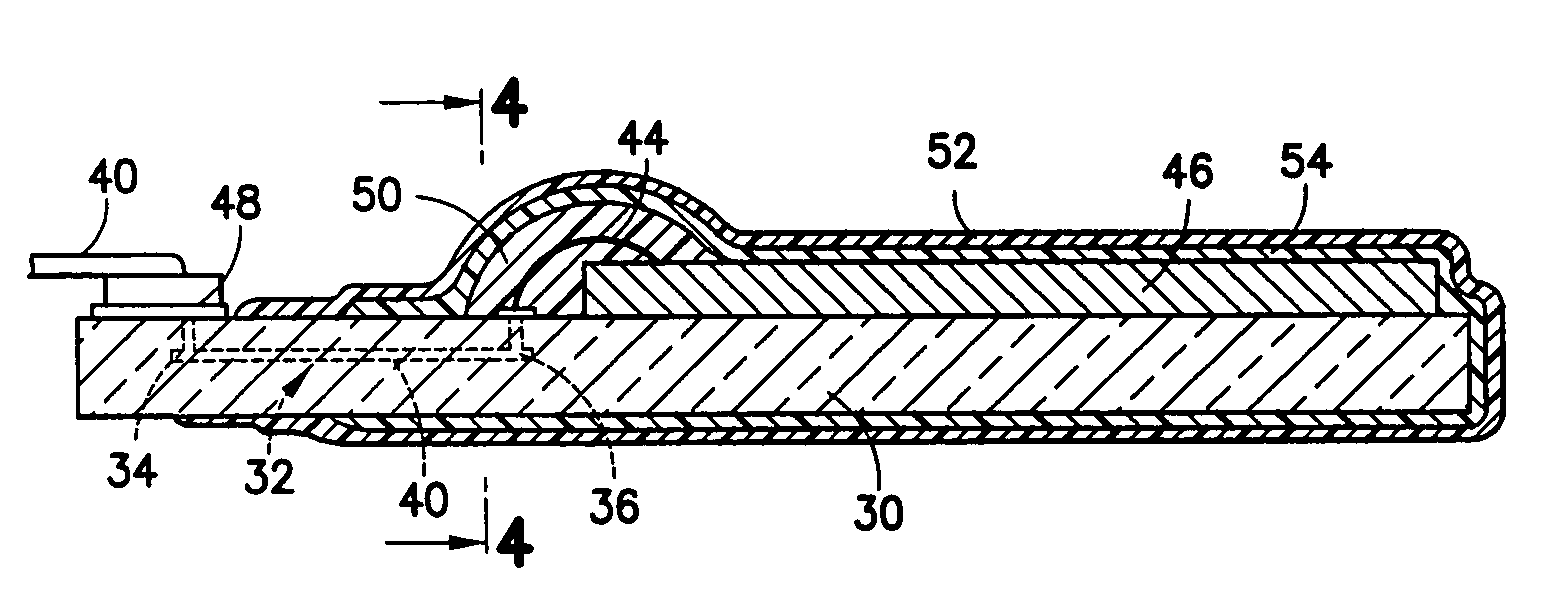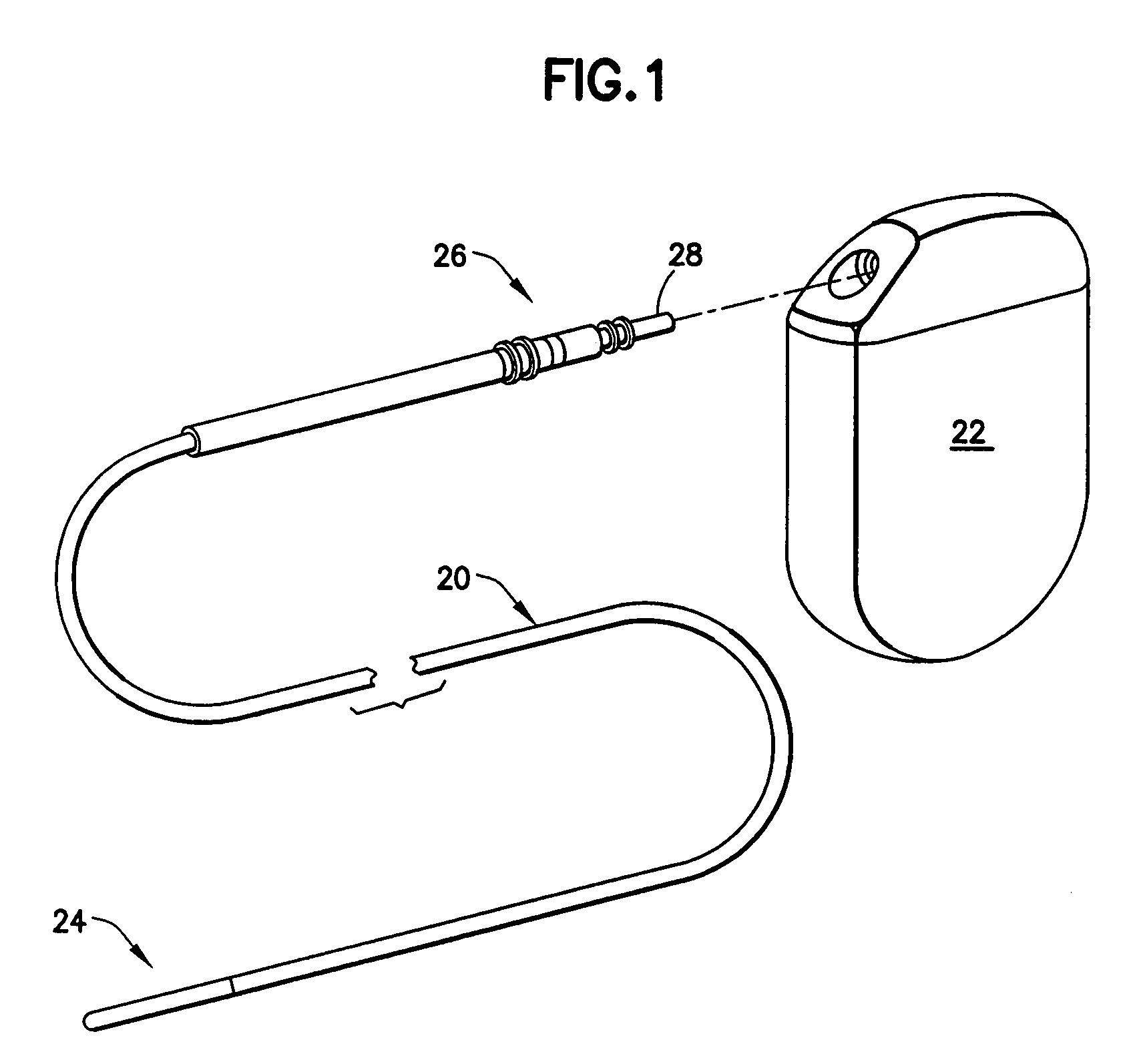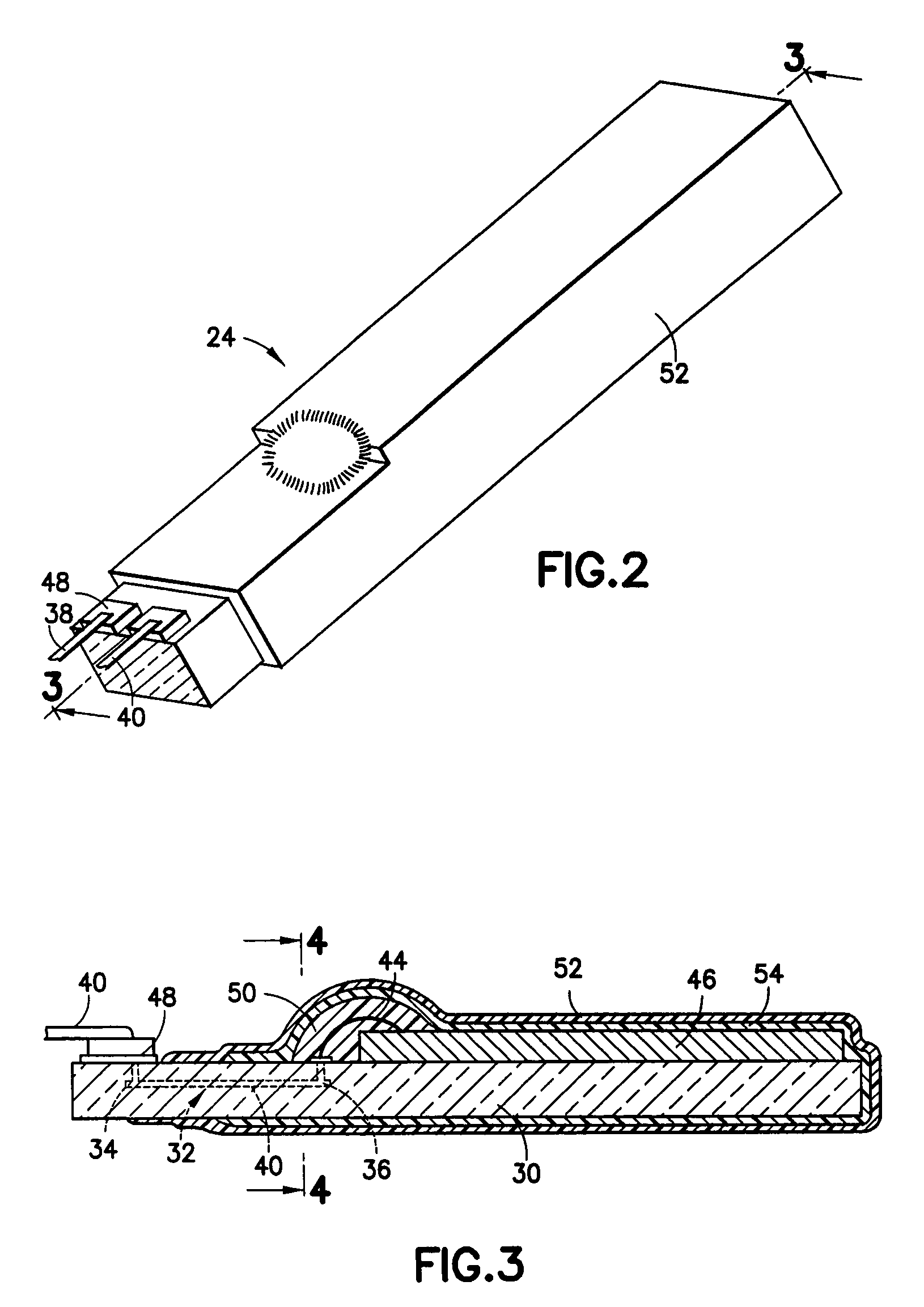Packaging sensors for long term implant
- Summary
- Abstract
- Description
- Claims
- Application Information
AI Technical Summary
Benefits of technology
Problems solved by technology
Method used
Image
Examples
Embodiment Construction
[0022]Refer now to the drawings and, initially, to FIG. 1 in which is shown an implantable lead 20 used in combination with an implantable stimulation device or pulse generator 22 such as a pacemaker or defibrillator and interconnects a sensor device 24 intended to be introduced into a living body, for example, into an organ such as the heart, and an electrical connector 26 at a proximal end 28 for attachment to the stimulation device. Although the present invention will be described with reference to the embodiments shown in the drawings, it should be understood that the present invention can be embodied in many alternate forms or embodiments. For example, the sensor device 24 may be located inside the lead 20 at various other locations than the one illustrated. Also, a number of sensor devices 24 could be incorporated into the lead 20. In addition, any suitable size, shape or type of elements or materials could be used.
[0023]For a more detailed description of the invention, turn n...
PUM
 Login to View More
Login to View More Abstract
Description
Claims
Application Information
 Login to View More
Login to View More - R&D
- Intellectual Property
- Life Sciences
- Materials
- Tech Scout
- Unparalleled Data Quality
- Higher Quality Content
- 60% Fewer Hallucinations
Browse by: Latest US Patents, China's latest patents, Technical Efficacy Thesaurus, Application Domain, Technology Topic, Popular Technical Reports.
© 2025 PatSnap. All rights reserved.Legal|Privacy policy|Modern Slavery Act Transparency Statement|Sitemap|About US| Contact US: help@patsnap.com



